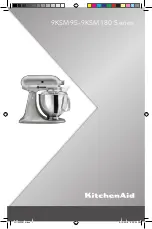
Revision C • 10/07
H
A
R
R
I
S
C
O
R
P
O
R
A T
I
O
N
A-9
Appendix A VMCC
[RouterCommand_1]
This section can specify up to sixty-three routes
to be taken when the session or macro file is taken.
Typical usage was shown in the examples under
signal numbering on the previous page. Each
Take_x
KeyValue, numbered sequentially start-
ing from 1, defines one route. Each EntryValue
then defines the source and the destination. In
take_1=161,241
, signal 161 is the source and
signal 241 is the destination.
MACRO FILES
Macro files are text-only command files with a
.mac
suffix. They are created using a text-only
editor like Notepad®. Macro files use the same
commands as session files, and are saved into the
sesfiles folder on the SBC. They typically have only
a few sections in them since a macro is created to
perform a specific task and so typically does not
address console channel button settings.
The most common macro application is to per-
forming return routing for two-way devices, like
ISDNs and Telco hybrids. These devices require a
mix-minus signal—which is specific to which fader
the two-way device appears on, to be routed from
the appropriate mix-minus bus to the two-way de-
vice. To do this, multiple macro files are created to
control the two-way routing. These macros are
what the operators actually select on the Telco
channels in the console. One macro is created for
each two-way device and for each fader channel
that device is available on.
Each of these types of macros has two routes:
one routes that Telco device to the fader; the sec-
ond routes the mix-minus for that fader channel
to the Telco device. Here’s a couple examples where
the Telco hybrid connects to the KSU A Analog
input (from network signal) and the A Analog out-
put (send to network signal).
[RouterCommand_1]
take_1=337,151; Hybrid In > Fader 12
take_2=161,241; MM-1 > KSU Analog A
The previous macro is selected on fader 12. If this
Telco hybrid will also be available on fader 13,
then this macro would be included on fader 13:
[RouterCommand_1]
take_1=337,153; Hybrid In > Fader 13
take_2=163,241; MM-2 > KSU Analog A
Macros can also perform complex audio and
logic switching functions. One typical use is to
switch the air chain between the main air studio
and an emergency backup studio. In this example,
device 2 is the production room 1 console which
will be switched into the air chain, taking over
from the main air studio. This macro switches the
PGM 1 feed from the product room to the air chain
through the Sage Endec delay and a BTI switcher.
The logic commands are used to switch “air con-
trol indicators” in each studio and to switch con-
trol between a delay dump control panel in each
room:
[RouterCommand_1]
take_1=d2.225,135; P1 PGM1 to Delay
take_2=135,71; Delay to Sage
take_3=71,81; Sage to BTI ana switch
take_4=71,137; Sage to BTI dig switch
[port_event_card_4]
port_event_30=1; Momentary Closure
[port_config_card_4]
port_config_15=2; P1 on-air latch
port_config_16=0; P2 unlatched on-air
port_config_17=0; Air delay panel off
port_config_18=2; P1 1 delay panel ON
port_config_19=0; P2 delay panel off
port_config_21=0; Air in delay off
port_config_22=2; P1 in delay ON
port_config_23=0; P2 in delay off
Macros are loaded by: an operator using a fader
source selector that has macros included in its sig-
nal list; through a chain command in a session or
other macro file: UDP commands from a digital
playback system networked with the VistaMax
system; using a manual file load FTP command;
using Task Scheduler to load macros by date/time.
Macro files are stored in the SesFiles folder along
with session files, however, since they do not have
Содержание RMXDIGITAL
Страница 2: ...Revision C 10 07 H A R R I S C O R P O R A T I O N ii...
Страница 90: ......










































